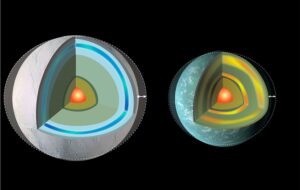–by Abhishek Biswas
–Reading Time – 10 min Approx
As the basic definition goes, friction opposed relative sliding between two surfaces in contact. A common misconception is that friction opposes motion. Following are some fun facts about friction. I will also include the findings of my discovery in the field of friction.
Almost all the work you do in daily life relies on FRICTION. Friction is an electromagnetic force. It is basically the nuclei of one surface pulling the electrons on the other surface and vice versa effecting in the two surfaces holding each other. So, whenever you pull or hold something, you can do it because of friction. Let’s say, you wake up one day and when you try to get up from your bed, you simply can’t. You try to lift yourself up, but your hands just slip off along your bed. You are asking yourself, what the hell happened? Newsflash!! Friction is gone. The only way you can move now is by blowing air in the direction opposite to the one you intend to move in. Somehow you get down from your bed, you are standing on the floor, but it is now hard to keep your balance. Your feet do not seem to have any grip on the floor. You attempt to walk but your feet simply keep sliding at the same area. Again, you must blow air. You will not be able to hold anything in your hands or eat your food or even drink water from a glass. Food will slip through your fingers; glass will fall through your hand. You can be certain that most of your daily activities which you used to do with much ease now are impossible to accomplish.
You try to lift yourself up, but your hands just slip off along your bed. You are asking yourself, what the hell happened? Newsflash!! Friction is gone. The only way you can move now is by blowing air in the direction opposite to the one you intend to move in. Somehow you get down from your bed, you are standing on the floor, but it is now hard to keep your balance. Your feet do not seem to have any grip on the floor. You attempt to walk but your feet simply keep sliding at the same area. Again, you must blow air. You will not be able to hold anything in your hands or eat your food or even drink water from a glass. Food will slip through your fingers; glass will fall through your hand. You can be certain that most of your daily activities which you used to do with much ease now are impossible to accomplish.
Sometimes I wonder how our universe would have been if friction was not there. Sorry to say, our universe wouldn’t have existed the way we know if friction had not been present. Yes, that is correct. As I said, friction is an electromagnetic force acting between atoms of two surfaces. That means, wherever there are atoms, there is electromagnetic force and one of its outcomes is friction. So, it can be said that friction is an unavoidable result of the existence of atoms. Atoms form molecules which are held together by electromagnetic forces which help in forming matter. The lack of existence of friction means there is no electromagnetic force. Microbes, animals, us, the earth, the other planets, the stars, none of them would exist without matter and therefore friction. All that the universe would have had is floating electrons and nuclei of elements.
 Life exists because of friction. It is needless to say that without friction there won’t be any matter and life can’t even find a basis to start on. Let’s say there was accidentally a surface formed in this universe, containing only nuclei and electrons just moving relative to each other due to a common momentum (momentum is the product of mass and velocity of a body). Otherwise, binding of atoms based only on perfect combination of arbitrary momenta is highly improbable. Even if that happened, there is no chance of formation of the type of life known to us on this surface without friction.
Life exists because of friction. It is needless to say that without friction there won’t be any matter and life can’t even find a basis to start on. Let’s say there was accidentally a surface formed in this universe, containing only nuclei and electrons just moving relative to each other due to a common momentum (momentum is the product of mass and velocity of a body). Otherwise, binding of atoms based only on perfect combination of arbitrary momenta is highly improbable. Even if that happened, there is no chance of formation of the type of life known to us on this surface without friction.
The reason is life needs binding of atoms and then matter flowing over other matter which can only happen if friction is present. Even if single cellular organisms could be formed due to some unnatural accident, there would have been no evolution of species. In multicellular organisms, nutrients are delivered to the organs with the help of electromagnetic forces. The biggest question should be, how will the nutrients even be formed? When we eat food, it slides down our esophagus, without friction it would simply fall down into the intestine most probably hindering the digestion process.
 Let’s imagine a Universe without electromagnetic forces and a few low probability accidents which might shape this universe. First comes the Big Bang, after which After an initial accelerated expansion called the inflationary epoch at around 10^−32 seconds, and the separation of the known fundamental forces except the electromagnetic one led to cooling of the universe. This means the universe is now filled with subatomic particles such as electrons, protons and neutrons. The protons and neutrons would combine to form light nuclei, maybe some heavier ones too owing to fusion of the nuclei under such temperature and pressure. However, due to lack of EM force, no atoms will be formed. The cooling and expansion would continue. Given, the conditions all particles should be moving in arbitrary directions. Let us assume that out of the billions and billions of particles some of them acquire same velocity and somehow, they get clubbed together. There will be no attraction between the electrons and nuclei or any repulsion between the electrons.
Let’s imagine a Universe without electromagnetic forces and a few low probability accidents which might shape this universe. First comes the Big Bang, after which After an initial accelerated expansion called the inflationary epoch at around 10^−32 seconds, and the separation of the known fundamental forces except the electromagnetic one led to cooling of the universe. This means the universe is now filled with subatomic particles such as electrons, protons and neutrons. The protons and neutrons would combine to form light nuclei, maybe some heavier ones too owing to fusion of the nuclei under such temperature and pressure. However, due to lack of EM force, no atoms will be formed. The cooling and expansion would continue. Given, the conditions all particles should be moving in arbitrary directions. Let us assume that out of the billions and billions of particles some of them acquire same velocity and somehow, they get clubbed together. There will be no attraction between the electrons and nuclei or any repulsion between the electrons.
Though, the nuclei may attract each other due to the close proximity. Thus, a certain body is formed which is made up of electrons and nuclei moving with common velocity. May be there will be bodies similar to one I described. They would of course attract each other through gravitational force, form small systems revolving around each other. But that is the end of it. These systems might form larger systems like galaxies or planetary systems, but they will never have a rigid structure. Even the smallest collision would result in disintegration of the said body. Needless to say, there will be no life whatsoever.
 In whatever way look at, Friction is an important force of the creation. It is so helpful, yet it is always looked down upon as a negative component of life. We always refer to Friction in a negative sense, to represent opposition, be it our mathematical calculations or be it the aesthetic literary representation – like the friction in life or relationship. We need to remember that Friction is the reason all good things exist.
In whatever way look at, Friction is an important force of the creation. It is so helpful, yet it is always looked down upon as a negative component of life. We always refer to Friction in a negative sense, to represent opposition, be it our mathematical calculations or be it the aesthetic literary representation – like the friction in life or relationship. We need to remember that Friction is the reason all good things exist.
Last but not the least, I’ll give some information about my discovery related to friction between sliding surfaces or in one word TRIBOLOGY. Under the guidance of my guide, Prof. Dr. S K Roychowdhury, a man I place in high regard, I discovered that X-rays are emitted when a surface slides on another surface. This work was further carried on by G. N. Krishna. The details can be found in: X-Ray Emission during Rubbing of Metals, Vol. 36, No. 3 (2014) 229-235, Tribology in Industry, Tribology in Industry.
–by Abhishek Biswas


